
Tomorrow, 8 November 2022, is Loy Krathong (ลอยกระทง) which is widely considered the most beautiful of the many festivals which are celebrated in Thailand. Along with Songkran (Thai New Year), it is considered to be the most important festival celebrated here. It is held on the night of the 12th lunar moon of the Thai calendar hence it is on a different date each year. In general, the festival usually falls in the month of November and symbolizes the end of the rainy season and the beginning of the rice harvest season. Gone are the days of relentless downpours with frantic Thais and foreigners alike trying to escape the heavy showers.
Loy (ลอย) means “float”, and a krathong (กระทง) is a special Thai floating basket particular to the event. The festival sees people “float off” their fears and concerns while wishing for a better future. A properly prepared krathong is believed to be a vessel to a new beginning and many people will design elaborate decorations for their baskets. Lights from several candles float on the krathong with each candle symbolizing a prayer or a wish offering by the devotee.

It is believed that Loy Krathong originated in the ancient city of Sukhothai, located about five hours north of Bangkok. It is not necessarily a religious holiday, but you will see many Thais praying to the water goddess, Phra Mae Khongkha (พระแม่คงคา), as they send their decorated krathongs down the river. This is done to give thanks for the fortune of having water while others will ask for forgiveness for using too much or contaminating it.

A wide slice of a banana tree trunk is used in the constructing the traditional krathong which is wrapped round with a long banana leaf. Additional rectangular-cut banana leaves are mounted to the base and then flowers are pinned on to start the decoration. Orchids, marigolds, Amaranth Globes, and roses are all traditionally used but any flowers can be attached. Candles and joss sticks are then mounted on the krathong. Thai people also traditionally believe that adding finger nails, and hair clippings onto a krathong symbolize sad thoughts and feelings to be washed away by the water. Coins are often included as a symbol of merit to be collected by poor souls and help them get to a better place.
In addition to the traditional banana trunk krathongs, some use bread baked into the proper shape. A bread krathong will disintegrate after a few days and can be eaten by fish. During the first couple of years that I lived in Thailand, Styrofoam was also used to make krathongs but I believe this is now banned throughout the Kingdom. If you would like to participate in the festival and float a krathong without having to make your own, fear not as there are many vendors selling the floating baskets during this time.

On Loy Krathong night, it is not uncommon to see many Thais wearing traditional Thai clothing. Beauty pageants are held throughout the country and in many schools. Afterward, these pageant contestants will take on Thailand’s brutal heat in full, beauty queen attire. It is not uncommon for some of the girls and women to faint during the longwinded parades.
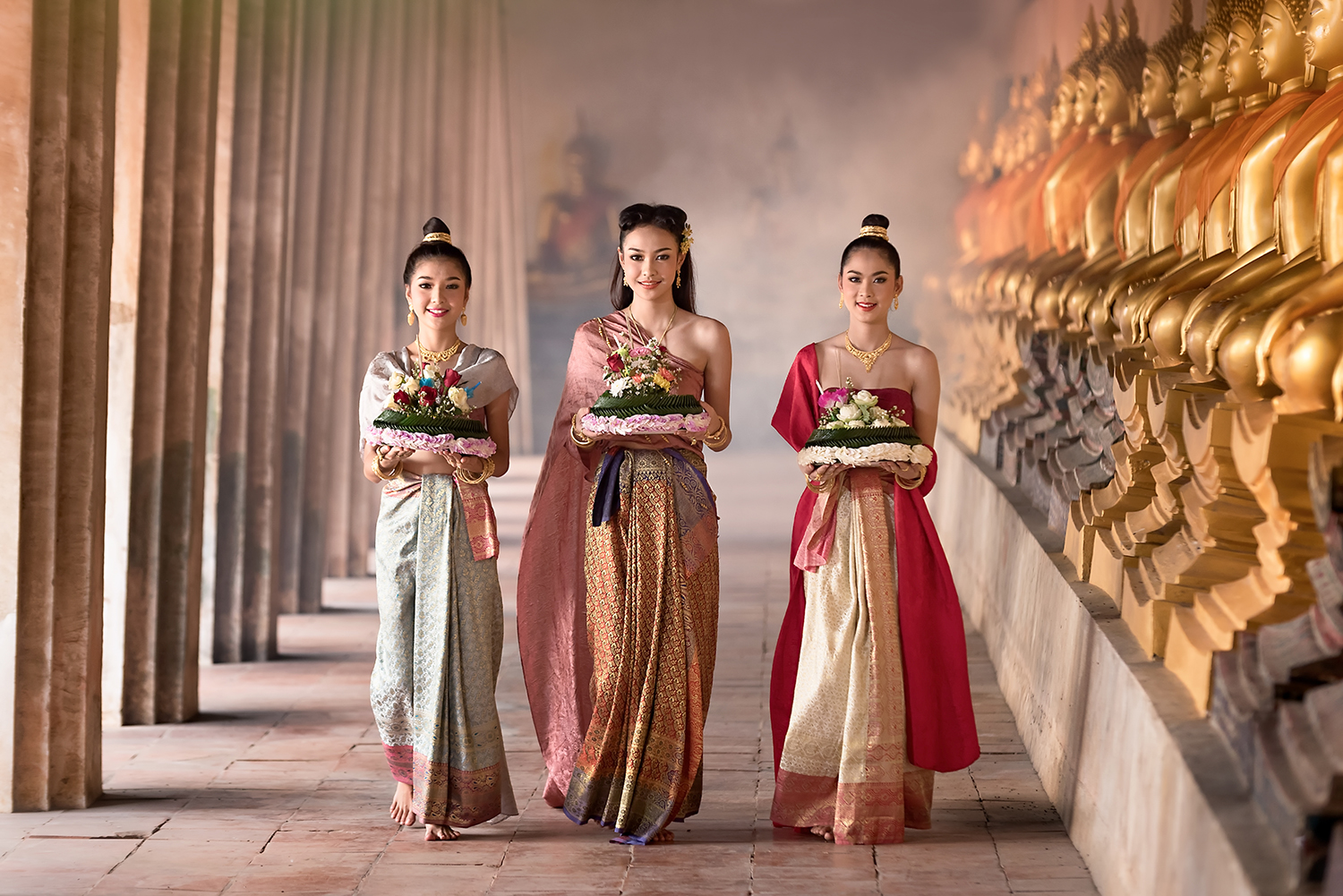
There are a number of customs associated with the festival. The entire family is supposed to hold on to their krathong together once the candles are lit. After making a wish or offering a prayer, it is placed into the water with a gentle push which carries it downstream along with prayers or wishes. The locals say that the krathong relieves you of all your troubles and evil spirits with the light and glow of the incense candle. It is considered as a symbol of good luck to follow the flickering light of the candle with your eyes as long as you can.
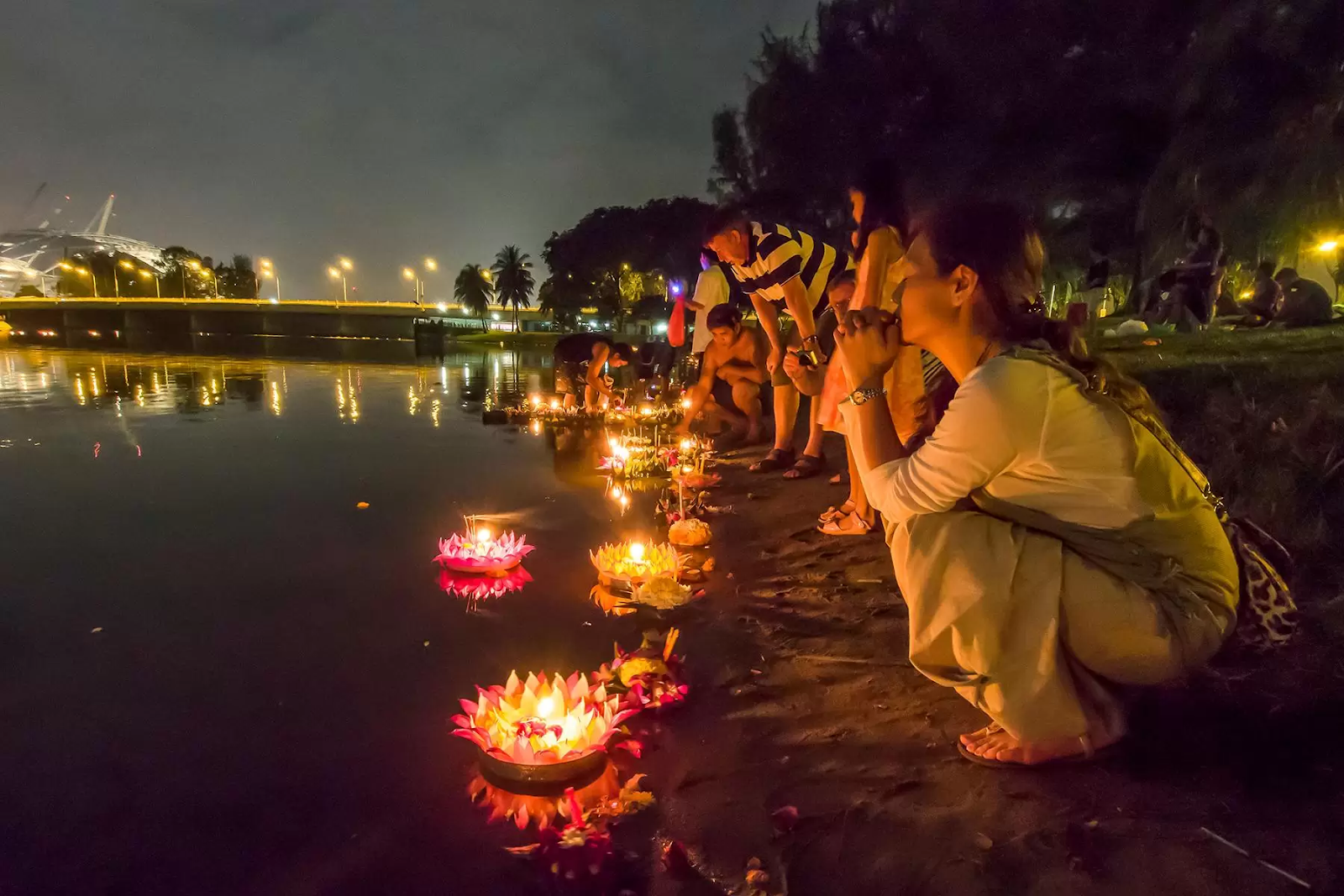
Many romantic or newly married couples add locks of their hair and nail clippings to their krathong before they light the candle and the incense. It is said that if the couple watches the krathong all the way until they lose sight of it, their love together will be everlasting. Thus, Loy Krathong is considered to be one of the most romantic festivals in the world. With traditional Thai music being played, one can enjoy a romantic dance with their partner, making the evening a very special one.
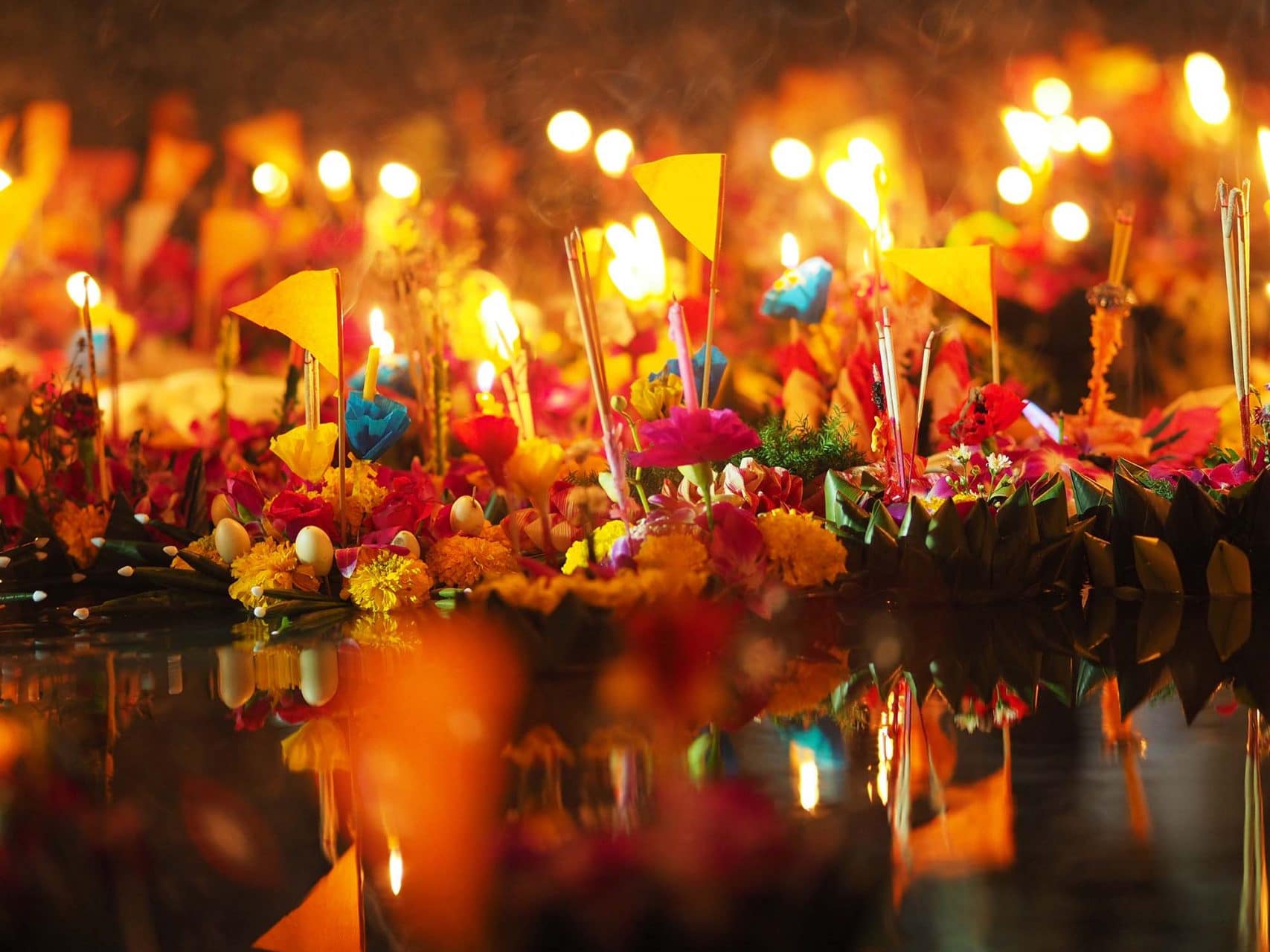
Other traditions and customs which are followed during Loy Krathong include setting eels and turtles free in the nearest river or pond. These eels and turtles are sold by the vendors near the waterfront. In many areas throughout Thailand, large paper lanterns known as khom loi (โคมลอย) are lit and float up in the sky. Khom loi are made from a thin fabric, such as rice paper, stretched over a bamboo or wire frame, to which a candle or fuel cell is attached. When the fuel cell is lit, the resulting hot air is trapped inside the lantern and creates enough lift for the sky lantern to ascend into the sky. It is truly a magical sight to see hundreds of these floating above. Similar to the floating krathong, the lanterns are held by the entire family after being lit and released into the atmosphere together.

Legends state that Loy Krathong began with Nang Noppamas (นางนพมาศ), a consort of the thirteenth century Sukhothai King Sri Indraditya (who is also known as Phra Ruang). It was believed that during an annual celebration during which royals offered votive floats to worship the Buddha, Nang designed an elegant float shaped like a lotus. She is said to have decorated the float with miniature bird figures. Today’s “Noppamas beauty pageants” are held in her memory. However, it is now known that the Noppamas tale comes from a poem written in the early-Bangkok period. According to King Rama IV, writing in 1863, it was a Hindu festival that was adapted by Thai Buddhists in Thailand to honor the Buddha, Prince Siddhartha Gautama.
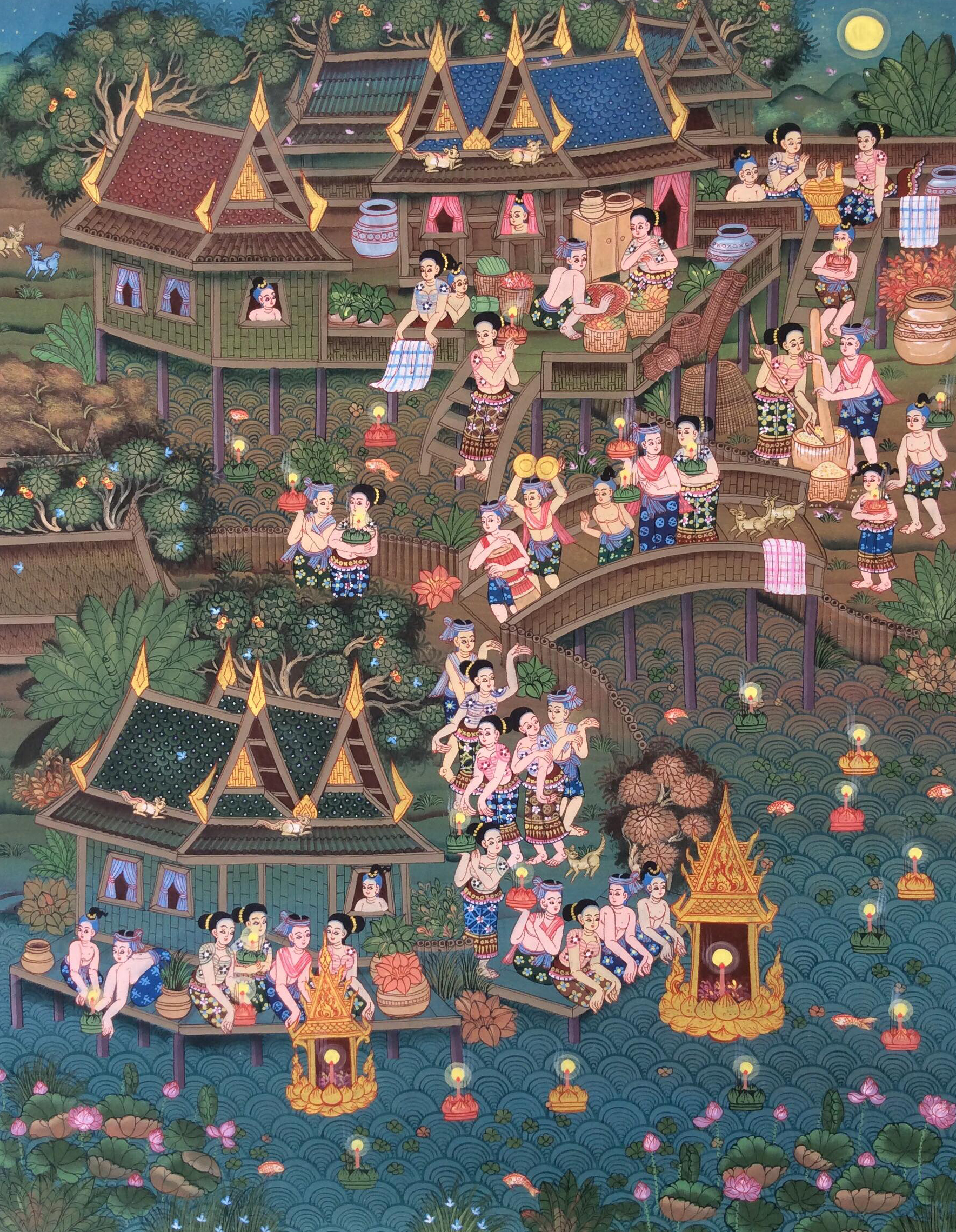
It is possible that the festival has origins related to a Hindu festival that honored the god Vishnu. Vishnu was depicted as meditating at the divine center of the ocean. By releasing their offerings in rivers, servants of Vishnu hoped he would receive them, as they believed all rivers led to him. In Hinduism, the water goddess Phra Mae Khongkha is known as Ganga.

Yet another possibility is that the practice originated from Angkor Thom in the Khmer Empire. Walls at Bayon, a temple built by King Jayavarman VII in the 12th century, depict scenes of Loy Krathong. A bas relief on the upper level depicts a queen residing on a boat floating a krathong in the river while six royal concubines are depicted below, some of which are holding a krathong and praying at the riverbank in a similar tradition practiced in present-day Cambodia, Thailand, and other Southeast Asian countries.

Loy Krathong coincides with the Lanna (northern Thai) festival known as Yi Peng (ยี่เป็ง). Yi means “two” and peng means a “full moon day”. Yi Peng refers to the full moon day in the second month according to the Lanna lunar calendar (the twelfth month of the Thai lunar calendar). The festival is meant as a time to make merit. During the festival, some people decorate their houses, gardens, and temples with khom fai (โคมไฟ), intricately shaped paper lanterns which take on different forms. Khom thue (โคมถือ) are lanterns which are carried around hanging from a stick, khom khwaen (โคมแขวน) are the hanging lanterns, and khom pariwat (โคมปริวรรต), which are placed at temples and revolve due to the heat of the candle inside. The most elaborate Yi Peng celebrations can be seen in Chiang Mai, the ancient capital of the former Lanna kingdom, where now both Loy Krathong and Yi Peng are celebrated at the same time resulting in lights floating on the waters, lights hanging from trees/buildings or standing on walls, and lights floating in the sky. The tradition of Yi Peng was also adopted by certain parts of Laos during the 16th century.
There is even a Loy Krathong song that is played ceaselessly in Thailand during the month of November. English teachers throughout the Kingdom scramble to find an English-language version to play for their students and attempt to coerce their students into singing. Ten years ago, I did this on a chalk board; I made a flashcard with the lyrics for this week’s lessons.




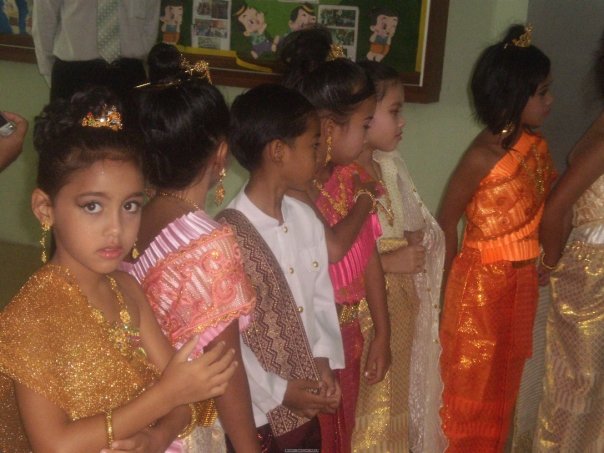

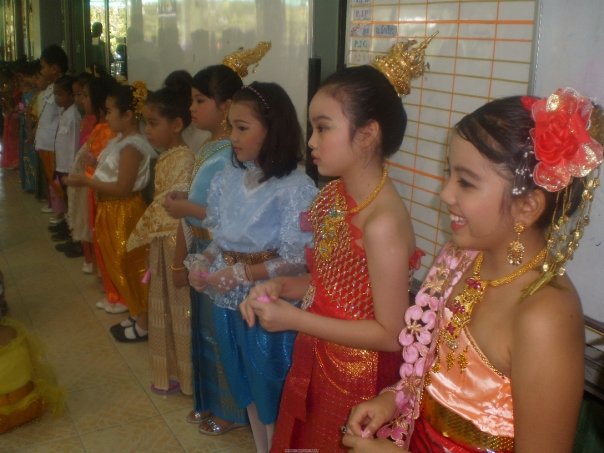




Leave a comment